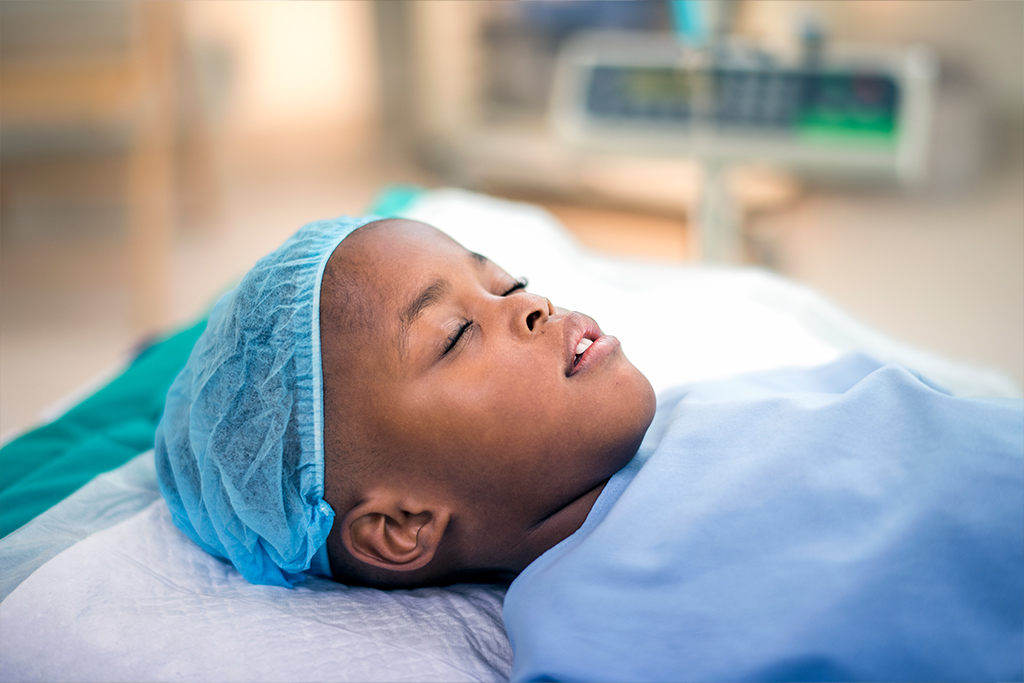The Enhanced Recovery After Liver Transplantation (ERAL) protocol—the first of its kind for pediatric liver transplants—optimizes patient care before, during and after surgery and enables children to be extubated in the operating room (OR). Since the hospital implemented ERAL in 2019, post-transplant ICU stays have fallen by 57%—from an average of seven days to three.
Andrew Costandi, MD, MMM, Anesthesiology Director of Abdominal Transplantation and Radiology at Children’s Hospital Los Angeles, presented on the protocol at the Society of Pediatric Liver Transplantation (SPLIT) 26th Annual Meeting, held in September in Newport Beach, California. CHLA—which has the second-largest pediatric liver transplant program in the country—hosted the conference.
“We are now extubating more than 75% of our patients in the operating room, with zero complications and zero reintubations related to the protocol,” Dr. Costandi says. “Many of these children are infants under 1 year and even as young as 5 months.”
Extubating patients in the operating room is becoming standard practice for adult liver transplant recipients. Studies in adults have also suggested that spontaneous breathing after surgery is better for graft function.
But until recently, pediatric patients have remained on a ventilator for the first few days after surgery—and sometimes longer. Although this ensured respiratory support, it also extended ICU stays and increased patients’ risk for infections and other complications.
“Liver transplant is a bigger, longer and more complex surgery in children than in adults,” Dr. Costandi notes. “So there was a lot of hesitation to extubate these children, especially younger ones, in the operating room. The biggest concern was that they would need to be reintubated because of respiratory failure.”
But with a handful of small, retrospective published studies demonstrating safety in pediatric patients—and based on the team’s expertise—Dr. Costandi launched an early extubation program for pediatric liver transplant in 2018.
By 2019, the team was safely extubating most pediatric liver transplant patients in the operating room. To take that success a step further, Dr. Costandi then convened a multidisciplinary team to create the ERAL protocol, which standardizes and optimizes care for these patients.
The team includes anesthesiologists, surgeons, hepatologists, intensivists, pain management specialists, hospitalists, nurses, pharmacists, dietitians, physical therapists, child life specialists and social workers.
“Our goal was to apply evidence-based strategies to continue to reduce complications, shorten the length of ICU stay, accelerate rehabilitation and improve the overall patient and family experience,” he explains. “The multidisciplinary approach was key. We needed everyone’s perspective to enhance each facet of care.”
The comprehensive ERAL protocol covers preoperative, intraoperative and postoperative care. It consists of standardization of anesthesia techniques, intraoperative transfusion strategies and fluid management. It also focuses on education, counseling, implementation of a multimodal opioid-minimizing pain regimen, early oral nutrition, physical therapy and more.
One of the key elements that supports OR extubation is a standardized approach to postoperative pain management that minimizes opioid use.
For example, immediately after surgery, patients are put on three pain medicine drips in the Pediatric Intensive Care Unit (PICU). Only one of those is an opioid (hydromorphone); the other two are dexmedetomidine hydrochloride and ketamine. Over the next three days, the drips are removed one by one—dexmedetomidine hydrochloride first (leaving patients more alert), ketamine second and hydromorphone last.
Postoperative pain management strategies also include gabapentin, as well as nonmedical approaches and psychological supports, including dog and art therapy. Importantly, all pain management is led by the hospital’s Inpatient Acute Pain Service, instead of each intensivist and surgeon individually managing this care.
Another critical piece of the protocol is early oral nutrition. Traditionally, patients were NPO (nothing by mouth) for days after surgery—with the idea of giving the GI tract a rest. Under the ERAL protocol, dietitians work to introduce clear liquids on post-op Day One and advance diet as tolerated—which prevents any adverse effects of malnutrition and promotes the return of bowel function.
“Everything is related to each other,” Dr. Costandi says. “If a patient is left intubated, then they will require more opioids, and the return of their bowel function will be delayed. That’s why it was important for all our disciplines to work together to create a comprehensive, integrated plan.”
Although most of the hospital’s liver transplant patients are now extubated in the OR, there are some exceptions. Children receiving combined organ transplants, such as heart-liver transplants, or those who were on ventilator support before surgery are extubated later.
And while some hospitals have recently begun early extubation for pediatric patients, Children’s Hospital Los Angeles is the only one to develop a broader enhanced recovery after surgery protocol specifically for pediatric liver transplant. Dr. Costandi hopes to publish a paper on ERAL next year that will include a large percentage of infants and data from nearly 100 patients.
One of the keys to the team’s success is CHLA’s large number of transplants. The Liver Transplant Program at Children’s Hospital Los Angeles is No. 2 in the nation in volume—performing 31 transplants in 2021.
He adds that while the ERAL protocol benefits many patients, it has been particularly advantageous for living donor liver transplant recipients, who typically are not as critically ill going into surgery. In 2021, CHLA performed the second-highest number of pediatric living donor liver transplants in the U.S.
“The fact that we are such a large-volume center is why we were able to develop this protocol,” Dr. Costandi says. “It’s that level of experience that enables us to optimize care and ensure the best possible outcomes for each child.”


